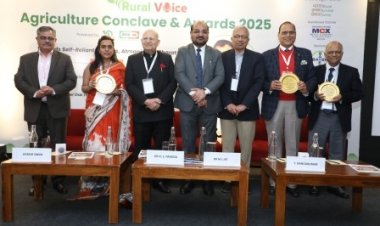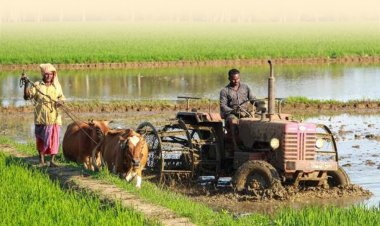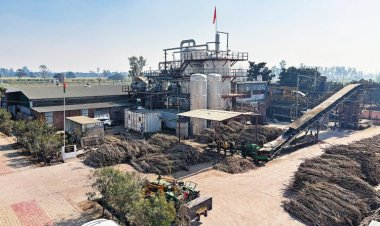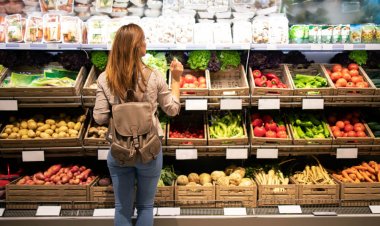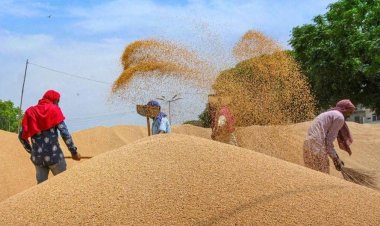Food and fertilizer subsidies may cross Rs 5 lakh crore this year; cut in Budget likely
When Finance Minister Nirmala Sitharaman presents the Budget in Parliament on Feb 1 for the coming financial year 2022-23, she will be faced with the challenge of signalling a shift in the trend of food and fertilizer subsidies. Thanks to the allocation of free foodgrains under the PMGKAY continuing for political gains till Mar 2022 and the increase of more than two times in the prices of fertilizers and their raw materials in the international market, the food and fertilizer subsidies may cross Rs 5 lakh crore in the current financial year.

When Finance Minister Nirmala Sitharaman presents the Budget in Parliament on February 1 for the coming financial year 2022-23, she will be faced with the challenge of signalling a shift in the trend of food and fertilizer subsidies. Thanks to the allocation of free foodgrains under the Pradhan Mantri Garib Kalyan Anna Yojana (PMGKAY) continuing for political gains till March 2022 and the increase of more than two times in the prices of fertilizers and their raw materials in the international market, the food and fertilizer subsidies may cross Rs 5 lakh crore in the current financial year (2021-22). A provision of only Rs 3,22,366 crore has been made in the current Budget — Rs 79,530 crore for fertilizer subsidy and Rs 2,42,836 crore for food subsidy. But, in the Revised Estimates (RE), the subsidies on these two items are likely to cross the 5-lakh-crore mark, which will amount to about 15 per cent of the total budget for the current year.
Given this scenario, the provisions made by the Finance Minister on these two items in the Budget for the coming financial year may indicate what stance the government is going to take on the food and fertilizer subsidy front in 2022-23. The first likely step to be taken may be that the PMGKAY, under which 5kg of foodgrains per person is distributed free every month, is brought to a halt after March. On the other hand, another likely step may be to increase the fertilizer prices so as to reduce fertilizer subsidy. It is more likely that urea prices will be increased. Currently, urea prices have climbed up to $1000 per tonne in the international market. And more than half of the fertilizer consumption in the country consists of urea.
The government has made a provision of Rs 2,42,836 crore for food subsidy in the current year (2021-22). Under the Public Distribution System (PDS), 654.8 lakh tonnes (lt) of foodgrains distribution has been allocated for the current year. Again, 448.6 lt of foodgrains distribution has been allocated under PMGKAY. Thus, a total of 11.03 crore tonnes of foodgrains has been allocated under PDS and PMGKAY by the Government.
The PMGKAY for free foodgrains was started during the lockdown in the first wave of Covid-19 for the period April to June 2020. This was its first phase. Later, the scheme was extended till November 2020, which was the second phase. The Assembly elections in Bihar were considered to be the main reason behind this second phase. The BJP and its ally Janata Dal (United) also reaped the political gains in those elections. In their conversation with this writer, several of the big BJP leaders from Bihar had admitted to the electoral gains reaped from free foodgrains. What is interesting is that the scheme of free foodgrains had been stopped from December 2020 to April 2021.
Later, during the second wave of Covid-19, its third phase was started for May and June 2021. In its fourth phase, the scheme was extended from July to November 2021. There were reports that the scheme would be stopped after November 2021. But it was at this time that the Uttar Pradesh (UP) government announced to start a similar scheme and, subsequently, the Union Government extended the free-foodgrains scheme under PMGKAY from November 2021 to March 2022, which is its fifth phase. This extension of the scheme is being attributed to the Assembly elections in five states, including UP. Political analysts say that even among these states, it is the political gains in UP that have especially been kept in mind while extending the scheme.
It is obvious that when Sitharaman presented the Budget on February 1, 2021, she may not have foreseen the subsidies mounting up to this extent due to the free-foodgrains scheme. But now that the scheme has been extended to March 2022, the burden is bound to fall upon the exchequer. In the financial year 2020-21, an allocation of 615.9 lt of foodgrains was made under PDS and that of 315.2 lt under PMGKAY. Thus, a total of 931.1 lt of foodgrains was allocated in the entire year. The amount spent on food subsidy was Rs 4,22,618 crore in RE 2020-21. However, a major part of this amount went into repaying the debts the Food Corporation of India (FCI) owed the National Small Savings Fund (NSSF) for the past few years.
As far as the current financial year is concerned, 437.1 lt of foodgrains has been distributed under the PDS and 308.4 lt under the PMGKAY up to December 2021. But due to the allocation for the full year as detailed above, the total foodgrains allocation will cross 11.03 crore tonnes. And due to this, food subsidy is estimated to cross Rs 3.7 lakh crore in the Revised Estimates for the current financial year as against the Rs 2,42,836 crore provided in the Budget Estimates (BE).
A provision of Rs 79,530 crore has been made for fertilizer subsidy in the Budget for the current financial year. The government had to increase the fertilizer subsidy twice as the prices of fertilizers and their raw materials went up in the international market. First, there was a massive increase in the subsidy on Di-Ammonium Phosphate (DAP) in June. Later, in October, the government decided to provide an additional subsidy on DAP and complex fertilizers. As a result, the fertilizer subsidy is expected to cross Rs 1.40 lakh crore in the Revised Estimates.
Thus, the food and fertilizer subsidies will cross Rs 5 lakh crore in the Revised Estimates. The Finance Minister had estimated a Budget expenditure of Rs 34,83,236 crore for the current year. Of this, the food and fertilizer subsidies had been estimated at 9.25 per cent. Last year, the food and fertilizer subsidies had gone up by up to 16.13 per cent from BE 2020-21 to RE 2020-21. We may not see the increase from BE to RE in the current year being as high as it was last year, but it is likely that there will be an increase of more than 15 per cent. In BE 2020-21, the food and fertilizer subsidies had been estimated at Rs 1,86,879 crore, which was at 6.14 per cent of the total budget. It is a different matter, however, that in order to lower the fiscal deficit over the past years, the government had provided a lower-than-required amount for food subsidy in the budget and then granted loans to FCI from the NSSF to meet the corporation’s funding requirements.
The problem now arises that pro-liberalization policy experts who consider an increase in subsidy to be antithetical to economic reforms will want to curb the food and fertilizer subsidies. There are only two ways to achieve this. One, stop the free distribution of foodgrains under the PMGKAY. And two, increase the prices of the fertilizers, especially those of urea. Neither of these moves is likely to harm the government much politically as the next round of elections in 2022 is scheduled only for Gujarat and Himachal Pradesh, two states where both these issues are not politically crucial. It is, therefore, significant to wait for the provisions made for food and fertilizer subsidies in the Budget presented by Sitharaman on the coming February 1. These will signal the stance the government is going to take in the future.



 Join the RuralVoice whatsapp group
Join the RuralVoice whatsapp group



















